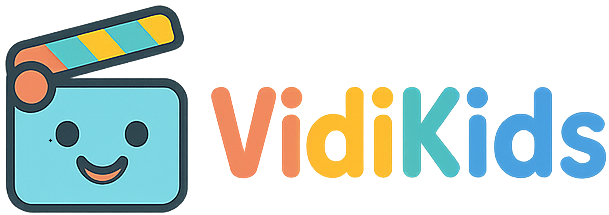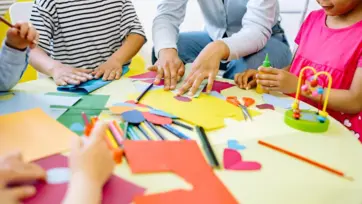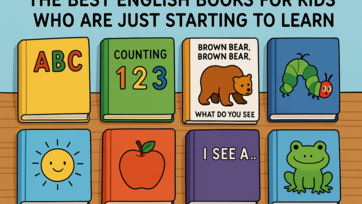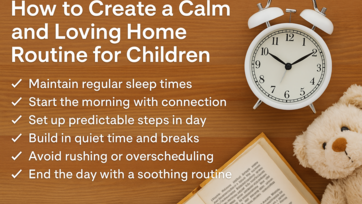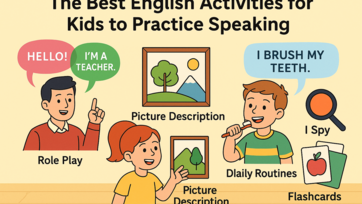Raising responsible children isn’t about making them complete a checklist of chores. It’s about giving them the tools to contribute, feel capable, and understand the value of helping others. Done right, building responsibility at home becomes less about control—and more about cooperation, growth, and trust.
So how do you encourage responsibility without constant reminders, arguments, or bribes? The answer lies in realistic expectations, simple structure, and a consistent, respectful tone.

Start Small and Keep It Age-Appropriate
Children can begin learning responsibility as early as age two or three. At that stage, responsibility means helping put toys away, carrying their cup to the sink, or placing laundry in a basket. These little actions lay the foundation for more meaningful contributions later.
As they grow, so should their tasks. By preschool, many children can dust furniture, water plants, or help set the table. Elementary-aged kids are ready to help with dishes, fold clothes, or sweep. The key is to assign tasks they can succeed at—then gradually increase responsibility.
Show That Everyone Contributes
Children need to see that helping at home isn’t a punishment or a test. It’s simply part of being in a family. When you present chores as normal and shared, children are less likely to resist.
Say things like, “We all help around here” or “In this family, everyone pitches in.” Avoid making chores a reward system or a power struggle. Children are more willing to contribute when they feel included, not coerced.
Be a Model of What You Ask
Children notice far more than we think. If you complain while doing chores or avoid them yourself, they’ll pick up on that. But if you approach tasks with a calm, even cheerful attitude, they’re more likely to follow your lead.
Make it a shared activity when possible. Invite them to wash dishes beside you, fold laundry together, or sweep while you tidy counters. Let them see you take pride in caring for your home—and they’ll learn that it matters.
Create Predictable Routines
Children thrive with routine. Set up daily rhythms where responsibilities naturally fall into place. For example, clearing dishes after dinner, or tidying toys before bed. You don’t need a chore chart unless your child enjoys visuals, but a consistent order of events helps them know what’s expected.
Even casual routines like, “After snack, we clean up,” or “Before screen time, toys get picked up,” give children a sense of structure and ownership.
Offer Limited Choices
Allowing a child to choose between two tasks gives them control while still guiding them toward responsibility. You might say, “Would you like to water the plants or help fold towels?” This small act of autonomy can reduce resistance and increase buy-in.
When children feel they have a say, they’re more invested in the outcome.
Teach First, Then Step Back
It’s easy to forget that children need to learn how to do tasks—especially when we’re in a hurry. Instead of expecting perfection, take time to teach. Show them how to wipe the table, scoop pet food, or fold a shirt.
Then let them try, and resist the urge to redo everything. Correct gently if needed, but praise their effort first. With time and repetition, they’ll improve—and gain confidence in the process.
Use Natural Consequences
When possible, let the real world do the teaching. If a child forgets to put a toy away and it gets stepped on or lost, that’s a lesson. If they don’t hang their wet towel, it won’t be dry next time.
These moments can be handled calmly and without punishment. Simply pointing out the result helps children connect action and consequence. That awareness builds responsibility from within, not because of fear or guilt.
Notice and Appreciate Their Effort
A simple “Thank you for helping today” goes a long way. Children want to be seen, and when they hear that their efforts matter, they’re more likely to repeat them.
Be specific in your praise. Instead of just “Good job,” say, “I really liked how you wiped the table so carefully.” Specific feedback reinforces positive behavior and helps children feel capable.
Stay Positive and Patient
You don’t need to nag to be effective. In fact, nagging usually causes stress on both sides and undermines the goal. Instead, stay calm and neutral when reminding. If your child resists, give a brief pause and then revisit the task later without frustration.
Avoid labeling them as “lazy” or “unhelpful”—these words can stick. Instead, acknowledge their feelings (“I know you’d rather play right now”) and remind them gently that helping is still part of the day.
Talk About the Bigger Picture
Children are more motivated when they understand why something matters. Explain how taking care of the home helps everyone feel calm and safe. Show how their small task fits into a larger purpose.
You might say, “When you feed the dog, you’re showing love and care,” or “When we work together, we finish faster and can relax more.” These conversations help children connect responsibility to values like kindness, teamwork, and respect.
What to Expect Over Time
In the early years, expect uneven effort and occasional resistance. That’s normal. But over time, consistency pays off. Children begin to internalize the rhythm of helping out. They remember tasks without prompting, and they even start to feel proud of their role.
By school age, many kids enjoy routines that give them structure and purpose. You may notice them making their bed without asking, or reminding a sibling to clean up—signs that responsibility is becoming part of their identity.
Final Thoughts
Teaching responsibility takes time, but it doesn’t have to be a daily battle. When children are guided with patience, involved in meaningful ways, and recognized for their contributions, they naturally grow into capable, helpful individuals.
The goal isn’t perfection—it’s progress. Little by little, task by task, your child is learning how to take care of themselves and others. And that’s something worth celebrating.
By trusting the process and staying steady in your expectations, you’re building habits that will serve your child for a lifetime. Responsibility isn’t about tasks—it’s about character. And every small step they take is shaping the person they’re becoming.
; ?>